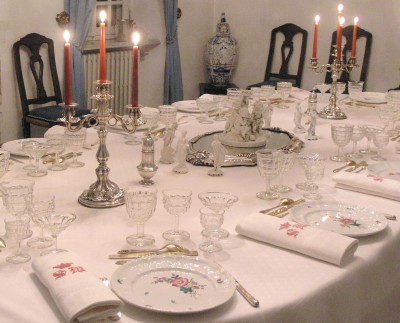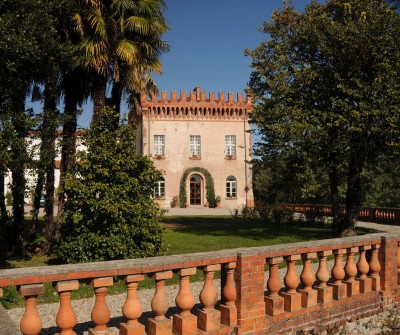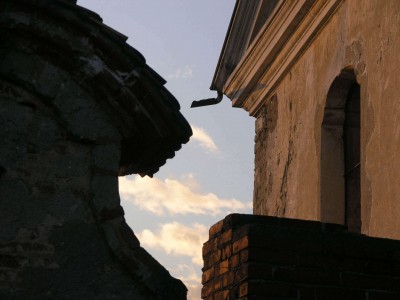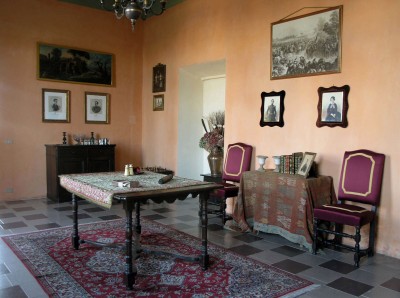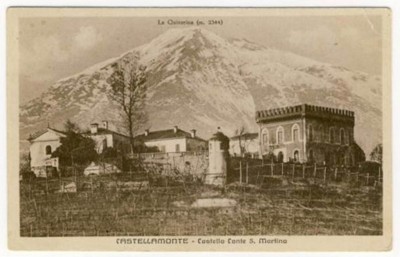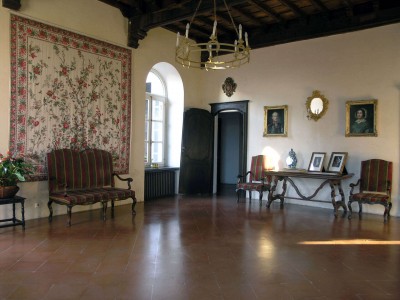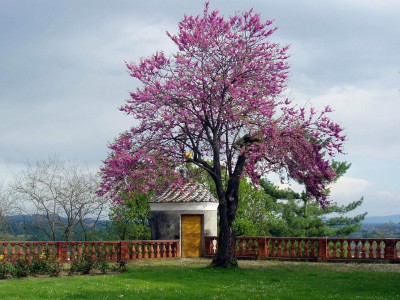THE CASTLE IS ENJOYING A WHOLE NEW LEASE OF LIFE AND HOSPITALITY IN THE HALLS OF ITS RED TOWER, WITH ITS ANCIENT BALCONY GARDEN AND INTRIGUINGLY IRREGULAR ARCHITECTURAL PROFILE
Contact the abode
In the 1760s, Amedeo di Castellamonte, First Architect of the Savoy family and designer of the Baroque masterpiece, the Palace of Venaria, inherited the ruins of the castle from an uncle and rebuilt the building as his primary residence. This architect to His Royal Highness reconstructed the Palazzo between the 13th-century walls and the 15th-century towers, staying faithful to the outline of the ancient medieval building that his ancestors, the Counts of Castellamonte, descendants of King Arduino, had founded around the year 1000.
In 1066, historical records already attest to the existence of the castle on the promontory overlooking the entire Canavese region, protected by the long surrounding wall around which the village developed over the following centuries.
In the mid-19th century, the Counts of San Martino added the characteristic Red Tower to the Castle in the neo-Gothic style, embellishing it with the characteristic red clay of Castellamonte.
Later passed down by inheritance to the Ricardi di Netro Counts, the Castle is today enjoying a whole new lease of life and hospitality, in the halls of its Red Tower, with its ancient balcony garden and its intriguingly irregular architectural profile. Castello di Castellamonte hosts a number of concerts, festivals and exhibitions, including the annual International Ceramics Exhibition, which celebrated its 62nd edition in 2023.
THE HISTORY OF CASTELLO DI CASTELLAMONTE
The earliest records are documented from 1066, but the structure is known to have already been in existence in previous decades. It was the Counts of Castellamonte, descendants of Arduino, who was initially the Marquis of Ivrea and later became the King of Italy, who transformed it into one of the most complex fortified structures in the Canavese area.
From the fortress, the enclosing wall descended towards the plain, encircling the entire hill until it reached the road connecting Cuorgnè and Ivrea. The village developed along the castle wall, where the seven still-visible gates were located, as well as the road that ran alongside it, taking its name from the castle itself.
During the 14th and 15th centuries, the Counts of Castellamonte divided into various branches and lineages, adopting various agnomen and surnames to differentiate themselves, such as Cagnis, Cognengo, Aimone, Della Porta and Merlo, among others. They administered the vast estate using the system of feudal consortium.
The county of Castellamonte was divided into 271 ‘jurisdiction points’, which the different branches of the family were responsible for managing on a rotating basis every three years. The Cognengo branch gave rise to Carlo di Castellamonte (Turin, 1560 - Turin, 1641) and his son Amedeo di Castellamonte (Castellamonte, 1618 - Turin, 1683), both of whom were architects working for the House of Savoy.
The original castle was destroyed during the Tuchinaggio uprising, which was provoked by the intolerance of the local communities towards the excessive power of the feudal lords, between 1383 and 1387, during the ongoing Canavese War that had been devastating the region since 1339. The Castellamonte family, who were in alliance with the San Martino family and were supported by the Savoys, were besieged by the Valperga family and their allies, the Marquises of Monferrato, who were seeking to expand into the territory. The rebellion began in the area of Castellamonte and then spread throughout the Canavese region, resulting in the massacre of several feudal lords and the total destruction of some castles. It was only in 1387 that Ibleto di Challant was dispatched by Amedeo VIII of Savoy and managed to restore peace and the so-called 'pax sabauda'.
The Castle was rebuilt at the beginning of the 15th century. The gate-tower of the boundary wall, the entrance gate-tower of the castle and the general layout, with the four buildings erected around the access road, still remain from that era today, while the two buildings to the north contain various relics from that period.
Further devastation occurred in the first half of the 16th century during the wars between the French and the Spanish, occasioned by Marshal de Brissac’s raid on Canavese in January 1552.
From the mid-nineteenth century, the Counts of San Martino di Sale and Castelnuovo, who had become the lords of Castellamonte after settling there in 1611, acquired the entire Castle and redeveloped various parts of it.
During the course of the 20th century, Castello di Castellamonte passed through inheritance to the Ricardi di Netro Counts.
FACILITIES AND SERVICES: WEDDINGS AND PRIVATE EVENTS IN THE PIEDMONT REGION
Private events: quotes available upon request.
Guided tours, advance reservation indispensable:
- Prices for groups of over 35 people: €6.00 per person
- Prices for groups of between 26 and 34 people: €7.00 per person
- Prices for groups of between 20 and 25 people: €8.00 per person
- Prices for groups of less than 20 people: fixed rate of €180.00.

